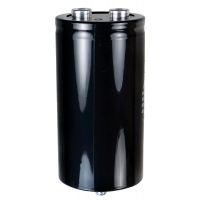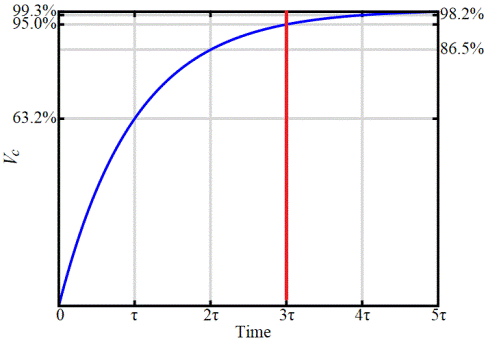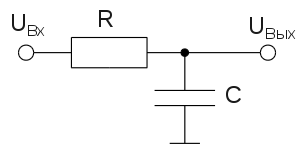Categories: Featured Articles » Sharing experience
Number of views: 40692
Comments on the article: 3
How to easily determine the capacitance of a capacitor using available tools
Sometimes when on capacitor there is no marking or no confidence in the parameters indicated on its case, it is required to somehow find out the real capacity. But how to do it without special equipment?

Of course, if at hand there is a multimeter with the ability to measure capacitance or a C-meter with a suitable range of capacitance measurements, then the problem ceases to be such. But what to do if only simple household multimeter and some power supply, but is it necessary to measure the capacitance of a capacitor here and now? In this case, the well-known laws of physics will come to the rescue, which will allow measuring capacitance with a sufficient degree of accuracy.

First, we consider a simple way to measure the capacitance of an electrolytic capacitor using available tools. As you know, when charging a capacitor from a constant voltage source through a resistor, there is a pattern according to which the voltage on the capacitor will exponentially approach the voltage of the source, and in the limit, someday, it will finally reach it.

But in order not to wait long, you can simplify your task. It is known that for a time equal to 3 * RC, the voltage on the capacitor during charging will reach 95% of the voltage applied to the RC circuit. So, knowing the voltage of the power supply unit, the resistor rating, and armed with a stopwatch, you can easily measure the time constant, or rather three times the time constant for greater accuracy, and then calculate the capacitance of the capacitor according to the well-known formula.

For example, consider the experiment below. Let's say we have electrolytic capacitor, on which there is some kind of marking, but we don’t particularly trust it, since the capacitor has been lying in the bins for a long time, and you never know whether it has dried up, in general, you need to measure its capacity. For example, the capacitor says 6800uf 50v, but you need to know for sure.
Step number 1. We take a 10kΩ resistor, measure its resistance with a multimeter, since we will initially trust our multimeter in this experiment. For example, we got a resistance of 9840 Ohms.
Step number 2. Turn on the power supply. Since we trust the multimeter more than calibrating the scale (if any) of the power supply, put the multimeter in the mode of measuring direct voltage, and connect it to the terminals of the power supply. We set the voltage of the power supply to 12 volts, so that the multimeter accurately shows 12.00 V. If the voltage of the power supply is not regulated, then simply measure it and record it.
Step number 3. We assemble an RC chain of a resistor and a capacitor, the capacitance of which needs to be measured. We short-circuit the capacitor so that it can be easily turned around.
Step number 4. We connect the RC chain to the power supply. The capacitor is still shorted. We once again measure the voltage supplied to the RC chain with a multimeter, and fix this value for fidelity on paper. For example, it remained 12.00 V, or the same as it was at the beginning.
Step number 5. We calculate 95% of this voltage, for example, if 12 volts, then 95% is 11.4 volts. Now we know that in a time equal to 3 * RC, the capacitor will charge up to 11.4 V.

Step number 6. We take a stopwatch in our hands, and unfold the capacitor, we begin the countdown at the same time. We fix the time during which the voltage across the capacitor reaches 11.4 V, this will be 3 * RC.
Step number 7. We make calculations. The resulting time in seconds is divided by the resistance of the resistor in ohms, and by 3. We get the value of the capacitor capacitance in farads.
For example: the time turned out 220 seconds (3 minutes and 40 seconds). Divide 220 by 3 and by 9840, we get the capacity in farads. In our example, it turned out 0.007452 F, that is, 7452 microfarads, and 6800 microfarads are written on the capacitor.Thus, the acceptable deviation of 20% was within the capacity deviation, since it amounted to approximately 9.6%.
But what about non-polar capacitors small capacities? If the capacitor is ceramic or polypropylene, then alternating current and knowledge of capacitance will help here.

For example, there is a capacitor, its capacity is supposedly several nanofarads, and it is known that it can work in an AC circuit. To perform the measurements, a network transformer with a secondary winding, say, 12 volts, a multimeter, and all the same 10 kΩ resistor, will be required.
Step number 1. We assemble the RC circuit, and connect it to the secondary winding of the transformer. Then we turn on the transformer in the network.
Step number 2. We measure the alternating voltage on the capacitor with a multimeter, then on the resistor.

Step number 3. We make calculations. First, we calculate the current through the resistor, - divide the voltage across it by the value of its resistance. Since the circuit is serial, the alternating current through the capacitor is exactly the same value. Divide the voltage across the capacitor by the current through the resistor (the current through the capacitor is the same), we obtain the value of capacitance Xc. Knowing the capacitance and current frequency (50 Hz), we calculate the capacitance of our capacitor.
For example: on the resistor 7 volts, and on the capacitor 5 volts. We calculated that the current through the resistor in this case is 700 μA, and therefore through the capacitor, is the same. So the capacitance of the capacitor at a frequency of 50 Hz is 5 / 0.0007 = 7142.8 Ohms. Capacitance Xc = 1 / 6.28fC, therefore C = 445 nF, i.e. 470 nF nominal.
The methods described here are very crude, so you can only use them when there are simply no other options. In other cases, it is better to use special measuring instruments.
See also: How to use a multimeter
See also at bgv.electricianexp.com
:
